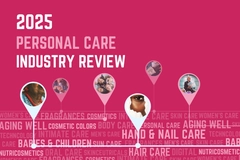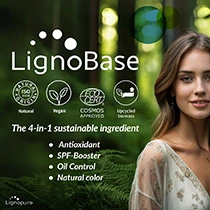E.L.F. Beauty bets on Rhode as Q2 misses estimates and tariffs hit margins
Key takeaways
- E.L.F. Beauty missed Q2 revenue expectations as tariffs cut margins and slowed profit growth.
- Rhode drove financial gains after delivering a strong Sephora brand launch, but core brand growth slowed.
- The company’s full-year outlook fell below Wall Street forecasts due to higher tariffs and cautious consumer spending.

E.L.F. Beauty has reported Q2 net sales of US$343.9 million, missing analyst expectations of US$366.4 million, and resulting in a full-year guidance below Wall Street forecasts.
Higher US tariff costs reduced the company’s gross margin by 165 basis points to 69%. Net income declined 84% to US$3 million, compared to US$19 million in the same period last year.
Following the financial announcement, the company’s shares dropped 26%–29% in after-hours trading as investors reacted to the revenue miss, margin pressure, and profit guidance.
E.L.F. CEO Tarang Amin says the company gained 140 basis points of market share for the E.L.F. brand in Q2. However, he claims that the innovation momentum has softened compared to last year’s viral lip-oil success.
“From a marketing standpoint, we had some massive launches last year... we feel great about our innovation this year, but it’s not as big as the lip oils were last year,” Amin said to Reuters.
He added that Rhode, which E.L.F. acquired earlier this year for US$1 billion, helped offset part of the innovation slowdown following a strong launch in Sephora North America.
E.L.F. says cautious consumer spending created more pressure in Q2.
Tariffs tackle gains
The company recorded net income of US$3 million, compared with US$19 million last year.
Gross margin declined to 69%, which the company attributes mainly to higher US tariff costs. The tariffs caused a dent in results as China supplies approximately 75% of E.L.F.’s global production.
The company says its expenses increased due to higher marketing, merchandising, professional fees, and distribution costs. Selling, general, and administrative expenses reached US$231.1 million, or 67% of net sales.
Currency fluctuations caused a US$1.9 million loss this year, compared with a US$3.8 million gain last year.
Shares dropped between 26% and 29% in extended trading.
Analysts note that slowing consumer spending played a role in the company’s revenue miss, as lower-income shoppers shifted into cheaper alternatives.
.webp) Amin says innovation momentum softened compared to last year’s viral lip-oil success.Amin said the company expects the second quarter to show the greatest impact from tariffs. E.L.F. raised prices by US$1 in August to soften tariff pressure, but the adjustment did not affect Q2 margins.
Amin says innovation momentum softened compared to last year’s viral lip-oil success.Amin said the company expects the second quarter to show the greatest impact from tariffs. E.L.F. raised prices by US$1 in August to soften tariff pressure, but the adjustment did not affect Q2 margins.
Amin further expects gross margin to improve in the second half of the year.
Rhode reliance
E.L.F. expects fiscal 2026 net sales of between US$1.55 billion and US$1.57 billion. The range represents 18% to 20% growth, but the outlook remains below analyst expectations of US$1.65 billion.
The company expects adjusted EBITDA to be between US$302 million and US$306 million, compared to US$297 million in fiscal 2025. However, the company forecasts adjusted earnings per share of US$2.80 to US$2.85, compared with Wall Street estimates of US$3.58.
The company expects tariff costs of more than US$50 million in fiscal 2026. It expects an adjusted tax rate of 23%, up from 21% last year.
Rhode will play a major role in the company’s growth plan. The brand is expected to add US$200 million in sales this fiscal year and contribute US$300 million annually once fully scaled.
The Hailey Bieber-founded skin care brand delivered Sephora North America’s biggest brand launch ever.
Rhode became Sephora North America’s largest brand launch to date and generated more than twice the sales of the retailer’s previous second-biggest launch.
E.L.F. says the acquisition strengthened the portfolio as growth in the core E.L.F. brand slowed.
The company plans to expand Rhode’s distribution and innovation pipeline to support its growth.












